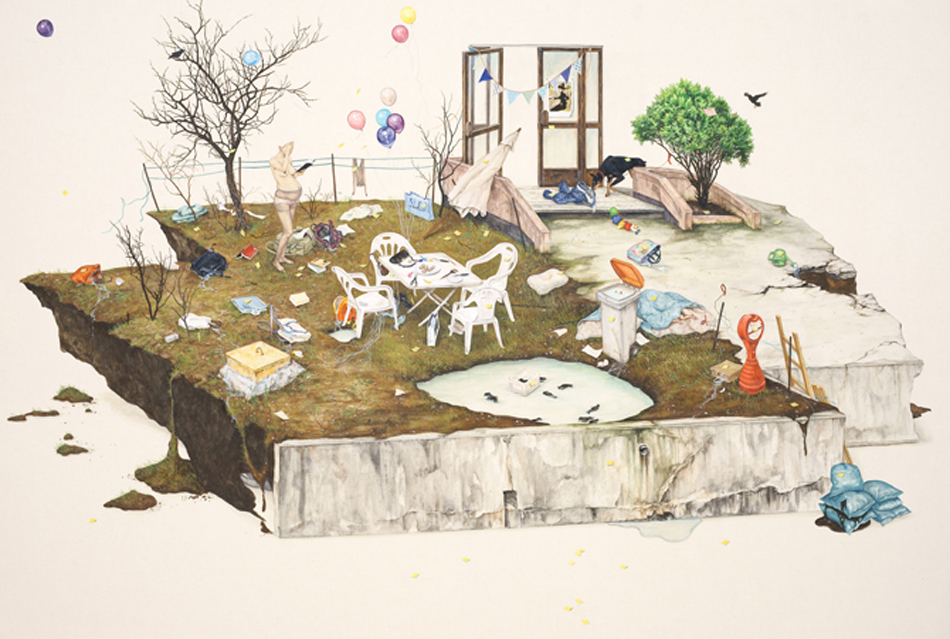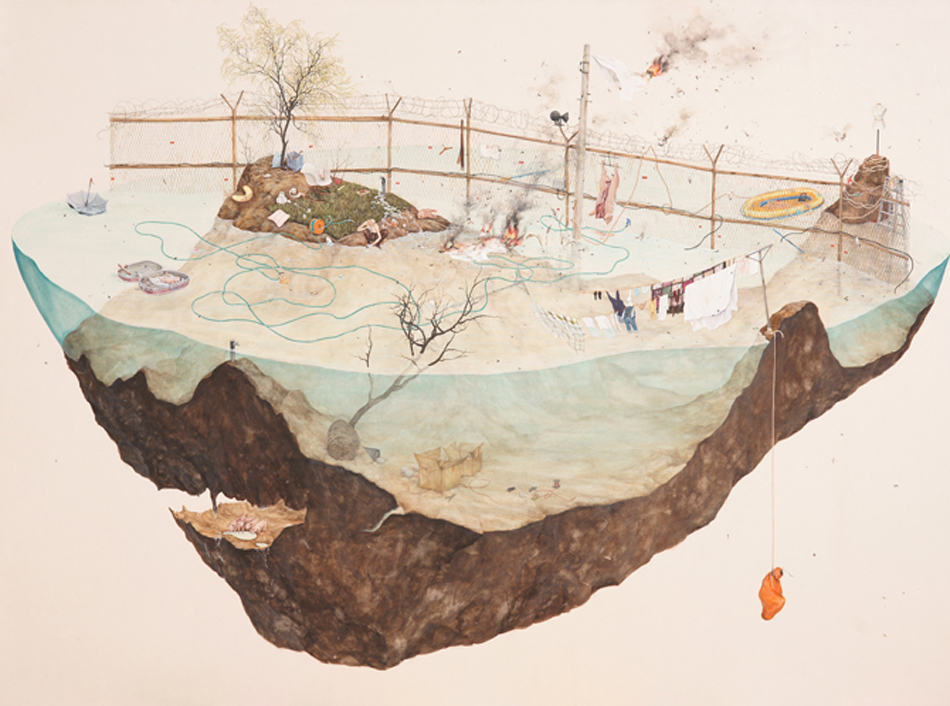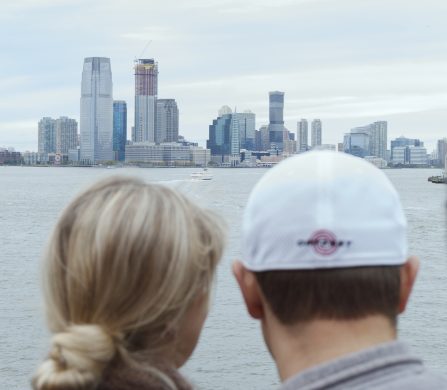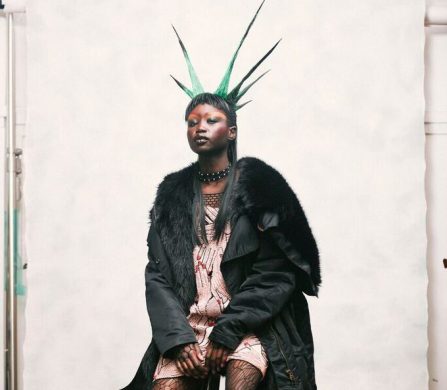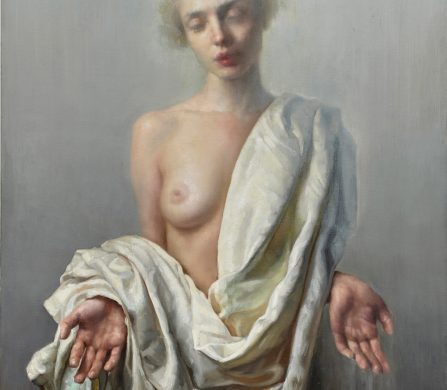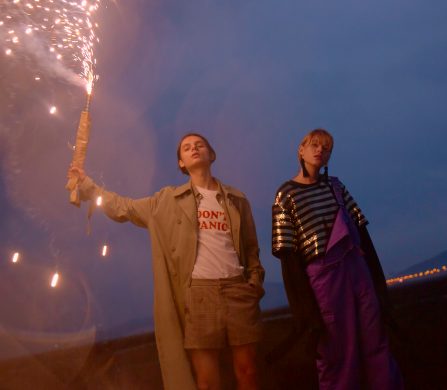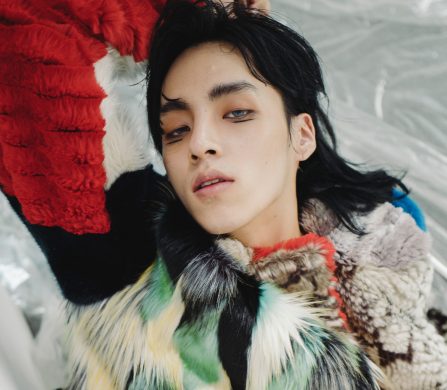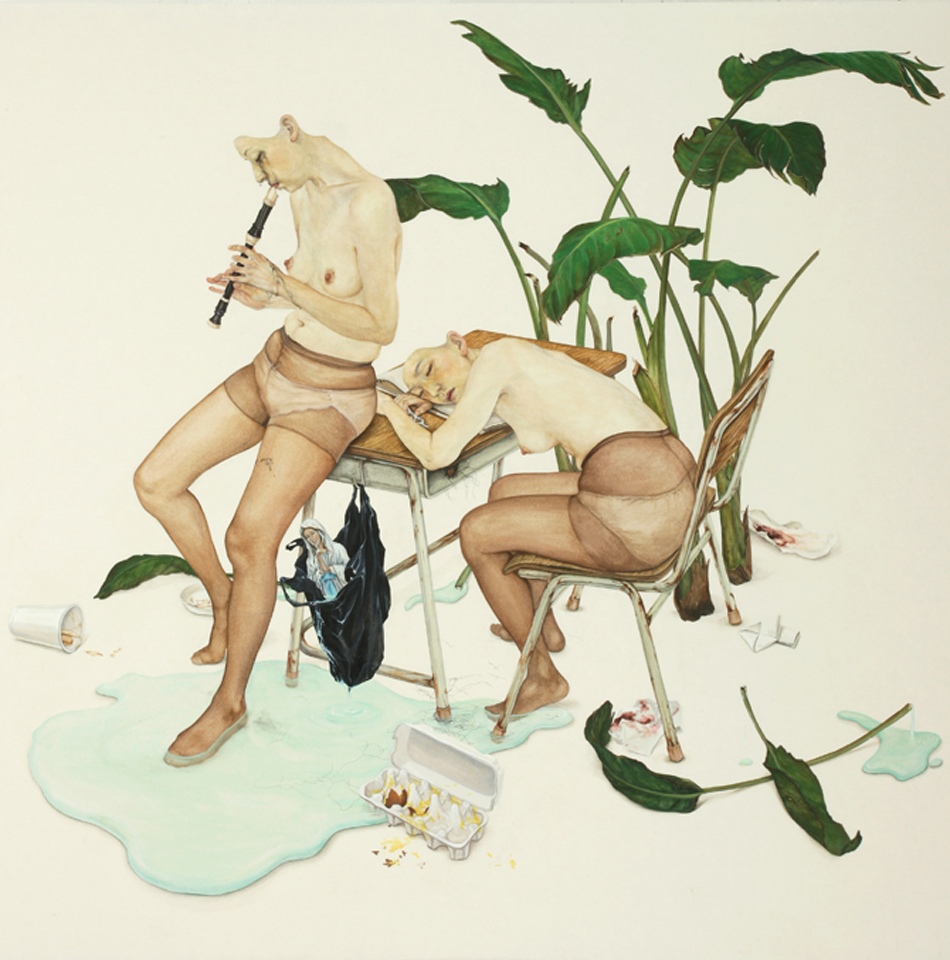
The Material of the Mind, Lee Jinju, 2010
South Korean artist Lee Jinju utilises the traditional method of Korean painting to create isolated scenes that combine seemingly disparate images, many of them recurring throughout her various works. Her work is an exploration of human perception, depicting the mysterious nature of reality where the conscious and unconscious flow together to create our visual landscapes, where the daily barrage of images and events ranging from the extraordinary to the banal are subject to the impacts of personal memories, dreams, and thoughts. Schön! sat down with Jinju Lee the day before the opening of her first solo exhibition in New York City to discuss her process and inspirations. Lee Jinju’s work is on exhibit at Chelsea’s Doosan Gallery until 27th February.
Your pieces have a very distinct visual style and emotional tone. Did it take time and experimentation to come up with this distinct style and method of conveying the feeling that the pieces put across so well?
Basically, at first, I started with the traditional Eastern approach as I majored in Oriental Painting, but as I tried to portray my personal story in the paintings, I began to stray from the traditional approach.
Have you always worked with the methods of traditional Korean painting, using ink on fabric, or did you experiment with other formats and materials before choosing this medium?
I only use the traditional Korean material. I could use the oil painting method, but the reason I’m sticking with the traditional method is that it fits well with my temperament. I’ve actually tried all the methods. In the case of oil painting, the paint gets thick on the surface of the canvas and creates a texture whereas with the Eastern painting, the paint has the effect of permeating the canvas. The colours are naturally mixed with water. I think this method works with my personality.
What is your process like? Do you know exactly what aspects and images are going to be involved in a painting or does that evolve as the process unfolds, more spontaneously?
There are many parts that are meticulously planned. I do many drawings. The curiosities that pop up in daily life are captured through drawings. So, many of these sketches are later rearranged and combined to make the story in the painting.
How big a part of your artistic process is catharsis?
Yes of course catharsis does come into effect. I mean, isn’t that obvious? But how does it act? Hmm…it’s somewhat tricky…catharsis to me isn’t about euphoria or satisfaction. It’s more attached to the feeling of pain instead of the feeling of satisfaction, so I’m not painting for catharsis. Instead, if I don’t do the work, it makes my life hard.
There is a definite feeling of isolation in your pieces. They all seem to be confined with clear boundaries, like a well of activity surrounded by nothingness. What inspires this recurring depiction of isolation in your works?
My memories. I was kidnapped at the age of four while I was outside trying to catch a frog. Fortunately I came home safely and afterwards was raised normally. But unfortunately during my twenties at college, one of my friends was stabbed to death, and another was mugged, and someone trespassed into my house. There were many horrible events happening to the people around me, like the things you only see on the news. As time went on, all of these different events that I wanted to erase from my memory started to connect. The fear and anxiety of the world, the ongoing construction around us, the uncontrollable, incessant nervousness of life opened the door to encounter new emotions.
And does the work give you some relief from these traumatic memories?
The purpose of my work isn’t to heal myself, but it has that effect to some degree. To me, the work arises out of curiosity rather than a desire for healing. These events that I want to forget recur in my memories. I keep facing the situation where these events in my memory permeate into my daily life. I became curious- why don’t they disappear? Why are memories so unstable? They are fragmental, partial. So all of these fragments of memories inspire me while working
There are a lot of different elements and images present in each piece- images that have to do with public life such as microphones and cameras, images that have to do with what one does behind closed doors such as hanging laundry, images of recreation that has been interrupted or abandoned, images of a sinister nature- an angry dog, a snake, objects on fire, children in danger, images that have to do with the everyday, the mundane- toilet paper, food, an extension cord. What inspires the combination of these images that might seem unrelated in another setting but which work together so well to create a unique mood in your pieces?
The things that I concentrate on are the scenery in our daily lives, memories and thoughts, and images from the present. Many awkward placements are portrayed in the paintings but I think that’s actually the true look of our reality. Images can appear to be totally irrelevant. For example, take a cup or a bottle, everyone has his or her own story when looking at it. Take a specific beverage for instance, it could bring back the memory of you drinking it with someone on a particular day. The stories you talked about on that day and the plot of the stories could lead to a memory that is totally different. These images and memories might seem irrelevant but they are tied by an almost invisible string. So I’m very interested in the structure of perception. The works contain my personal stories but they are placed on one screen so it creates a somewhat uncomfortable and yet unique nuance of psychological scenery. I think that’s what my works are portraying.
Do you think that right now is a good time to be an artist? Is the present time and atmosphere one that is conducive to creativity?
I am not one hundred per cent satisfied but it is certainly better now than it was in the past, especially in the case of Korean art. There is more attention paid to the young artist in Korea now…there are more facilities and more support compared to in the past.
Do you see a big difference between the artistic outputs in different countries or is there a similar trend or feeling- say to the work of artists who are working in Korea right now versus the US versus the UK etc.?
Well, the Western art seems very different from what I am doing in Oriental Painting, but you know there’s many similarities between their works and what is being done by many artists in South Korea right now. But my works are different I think. I see some connections sometimes.
In your opinion or approach, what is the function or purpose of art?
Psychologically I think that art helps us to discover about our lives. I think it has that kind of impact. It’s the joy of discovery. We’re already experiencing life- art makes you realise what the experience really was. I’m more moved by that concept of art. It’s beautiful in all genres of art. It’s personal.
What are your creative hopes for the future? How do you see your work evolving?
I just hope, through my work, to better understand the world and life in general. And I wish the same for others as well. There’s a novel by Marcel Proust called “In search of Lost Time”, one of my favourites. Through the taste of the Madeleine, the character is able to discover and observe the past memories, the present, the lines between consciousness and unconsciousness. The novel is full of detailed precise descriptions about these observations, one leading to the next. It’s a very personal story but takes the reader to the borderlines of their own realities. I’m interested in that aspect, so my work also reflects the places located on the borderline of the conscious and the unconscious.
You can see Lee Jinju‘s work on exhibit at the Doosan Gallery in New York City through February 27, 2014.
Interview conducted with the help of translations by Jiun Kim and Brian Baek.
Words/ Lee Pennington
Click the below links to view the newest Schön! Magazine
Download Schön! the eBook
Schön! on the Apple Newsstand
Schön! on Google Play
Schön! on other Tablet & Mobile device
Read Schön! online
Subscribe to Schön! for a year
Collect Schön! limited editions












